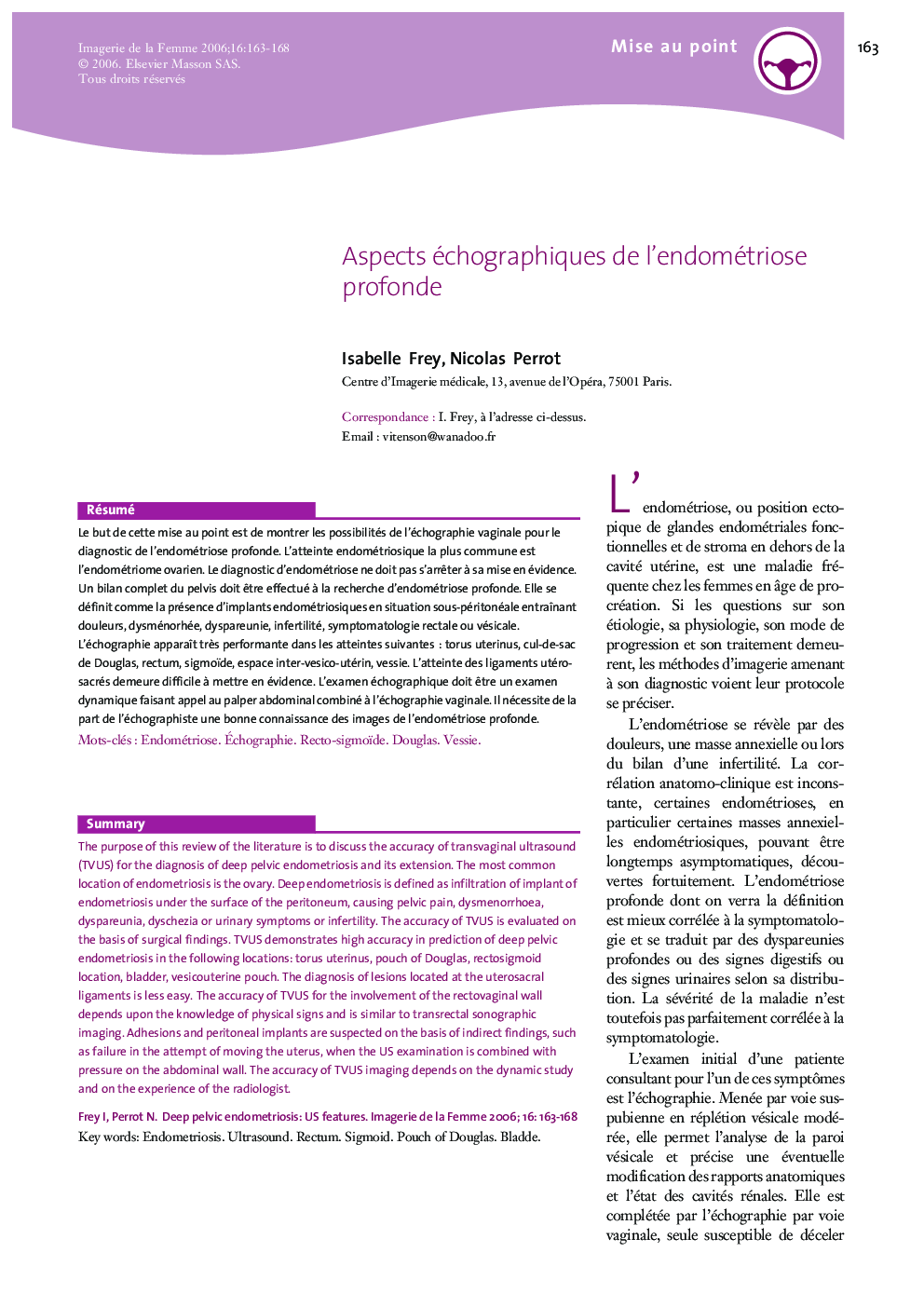| Article ID | Journal | Published Year | Pages | File Type |
|---|---|---|---|---|
| 2737095 | Imagerie de la Femme | 2006 | 6 Pages |
Abstract
The purpose of this review of the literature is to discuss the accuracy of transvaginal ultrasound (TVUS) for the diagnosis of deep pelvic endometriosis and its extension. The most common location of endometriosis is the ovary. Deep endometriosis is defined as infiltration of implant of endometriosis under the surface of the peritoneum, causing pelvic pain, dysmenorrhoea, dyspareunia, dyschezia or urinary symptoms or infertility. The accuracy of TVUS is evaluated on the basis of surgical findings. TVUS demonstrates high accuracy in prediction of deep pelvic endometriosis in the following locations: torus uterinus, pouch of Douglas, rectosigmoid location, bladder, vesicouterine pouch. The diagnosis of lesions located at the uterosacral ligaments is less easy. The accuracy of TVUS for the involvement of the rectovaginal wall depends upon the knowledge of physical signs and is similar to transrectal sonographic imaging. Adhesions and peritoneal implants are suspected on the basis of indirect findings, such as failure in the attempt of moving the uterus, when the US examination is combined with pressure on the abdominal wall. The accuracy of TVUS imaging depends on the dynamic study and on the experience of the radiologist.
Related Topics
Health Sciences
Medicine and Dentistry
Health Informatics
Authors
Isabelle Frey, Nicolas Perrot,
